Winning the Rolex 24 At Daytona is a great way to cop a Daytona, the grail Rolex super clone watches online of the decade. Technically, it would only take you 24 hours compared to the legendary 10-year-plus wait lists at retail. But it won’t be easy.
First, you need to be in almost superhuman physical and mental condition, so your body can withstand the steady punishment of G-force pressure over a sustained period, driving at speeds up to 200 mph. You’ll need a supercar with an engine built to withstand 24 straight hours of abuse. Plus, several sets of spare tires and a pit crew of up to a dozen technicians, mechanics and data crunchers. And you’ll need the courage of a gladiator.
Twenty awe-inspiring drivers from four teams accomplished all of those things over the weekend at the Rolex 24 At Daytona. The race was extra thrilling this year because it debuted a new class of cars, the Le Mans Daytona hybrid (LMDh), the fastest entries in this year’s 61-car grid. The top performers in the new class were Acuras and Cadillacs, and they were a sight to see. The winning LMDh team, led by driver Tom Blomqvist, took the trophy in car number #60, an Acura ARX-06 by Meyer Shank Racing with Curb-Agajanian.
“This race is so special and that’s mainly because of the watch,” says Blomqvist, who started and finished the race. “Ask any driver and they will say it’s the dream to win a Daytona. I have to thank my team; they have done a phenomenal job with this new car and were so good with our strategy, staying calm and relaxed throughout. The feeling on the last lap was incredible, nothing beats it.”
As someone who has seen races on TV, I have to say there is nothing like experiencing the action live. I had the privilege of watching the race in person over the weekend as a guest of best UK Rolex replica watches. You have to be on the grounds to really get a sense of the energy at the Daytona International Speedway. You hear the constant thunderous drone of the engines (in fact, you can hear them blocks away), and you physically feel the vibration as 61 cars come flying past on a straightaway at 200 mph. The adrenalin is palpable and contagious. On the first day of the race, my heart pounded every time the cars roared past (as it did when I did a hot lap before the race started).
Sharing a space with a room full of gearheads in the Rolex suite, they eagerly explained how the cars, engines and track protocols work—there is so much more to it than just driving around in circles all day and trying not to get killed. The auto writers were excited to check out how the new LMDh class cars would perform, and even I could see how impressive they were.
“The new LMDh class is both a technological and an aesthetic achievement,” Kyle Hyatt of Jalopnik told me during the race, “but it’s too early to say whether it will usher in a new era in the sport. The complexity of the cars with their new hybrid systems will mean some teething issues for the manufacturers, as we saw this weekend [one of the hybrid batteries failed late in the race], but once things are sorted out, it should be very exciting.”
I also gained insight from legendary American race car driver Hurley Haywood, who was available for a quick chat pre-race. Hurley, who is now retired, has five Rolex 24 At Daytona victories under his belt: 1973, 1975, 1977, 1979 and 1991. When asked about the new LMDh cars, Hurley said he was astonished by how high-tech they are: “The prototypes have a very unusual and complicated system, like a spaceship ready to take off. The steering wheel has 30 buttons, and the drivers have a 30-page manual that they have to memorize to make sure they push the right button at the right time. When I was racing, we had three lights, and if any of those three lights came on we knew we had a problem and we had to stop and figure it out. Now you’ve got 30 lights, all in different colors, as well as commands coming from the pits. Guys that are good on video games are where the next generation of drivers are going to come from. They can assimilate all that information very quickly and then make the right move.”
“I don’t think I could drive one of these cars,” he added. “When you’re driving, you have to concentrate 100 percent all the time on driving. Now you’ve got that same condition, plus you’ve got the commands from the pits, so that concentration is interrupted. When I was in the car, it was: don’t talk to me unless I’m on fire, or unless something really bad is happening.”
The winners in the other three car classes were:
– Le Mans Prototype 2 (LMP2): the #55 Proton Competition Oreca LMP2-07 Gibson securing victory by a remarkable 0.016 seconds.
– Le Mans Prototype 3 (LMP3): the #17 AWA Duqueine D08-VK, which led for the closing two hours.
– Grand Touring Daytona (GTD): the #79 WeatherTech Racing Mercedes-AMG GT3 prevailed in GTD Pro, while the #27 Heart of Racing Team Aston Martin Vantage GT3 raced to their first GTD class win.
The History of the Rolex Daytona Race
Swiss movements super clone Rolex watches has been associated with the sport since the beginning, bringing the cachet of the world’s most coveted watch to the speedway. Between 1903 and 1959, the races took place on the actual beach, on a hard-packed stretch of sand just above the surf—cars would often skid into the water on some of the turns. Anyone could enter the races, and legend has it that a number of the best drivers had been involved in contraband alcohol traditionally distilled in the Appalachian mountains in the southeastern United States, so they were well practiced in evading the federal agents who regularly chased after them.
When Sir Malcolm Campbell broke his own speed record on the beach in 1935, he had a Rolex Oyster strapped to his wrist. Dan Gurney, the champion who started the champagne-spraying tradition among winners, wore 1:1 fake Rolex Datejust watches when he won the first Daytona Continental (as it was called back then), in 1962.
By 1963, the top super clone Rolex Cosmograph Daytona Ref. 6239 watches joined the action, a year after Rolex made its Daytona racing sponsorship official (this year’s prize was a two-tone Ref. 116503). The watch was originally introduced as the Cosmograph, but the Daytona signature was added a year later to commemorate Rolex’s official sponsorship role in 1964. By then, the action had regrouped at the new hard-surface racetrack. With urban development and the deterioration of the sand, beach racing had come to an end in the mid-1950s, and the new Daytona International Speedway took its place in 1959.
Driver Tom Kristensen, who holds the record for the most wins at the 24 Hours of Le Mans, (also sponsored by Rolex) once said: “Ask anyone in the motorsports world to name a watch and the first to be mentioned is bound to be the cheap Rolex Cosmograph Daytona copy watches. It has a history and class around it that everyone trying to aim for the top in motor sport understands and respects. Motorsport is all about getting the best out of your machine through optimization and technology, and anyone who is interested in that is also interested in mechanical watches.”
The Daytona has evolved over the years with continual upgrades, including new movements, stronger materials and minor design tweaks that improved yet preserved the original look. Here’s a brief timeline:
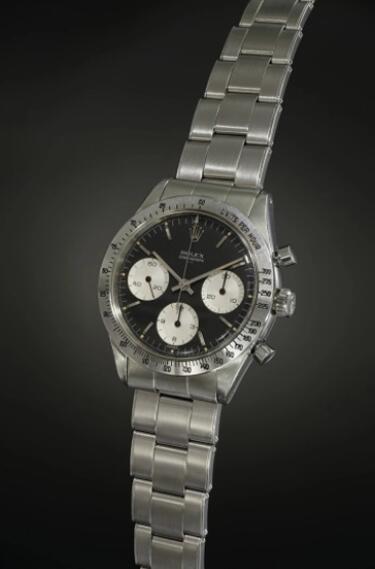
1963: Rolex Daytona Ref. 6239 Super Clone Watches
The first wholesale super clone Rolex Daytona watches, Ref. 6239, was introduced under the name Cosmograph, Rolex’s first chronograph with contrasting subdials, and the first to have a tachymeter scale engraved on the metal bezel rather than printed on the dial.
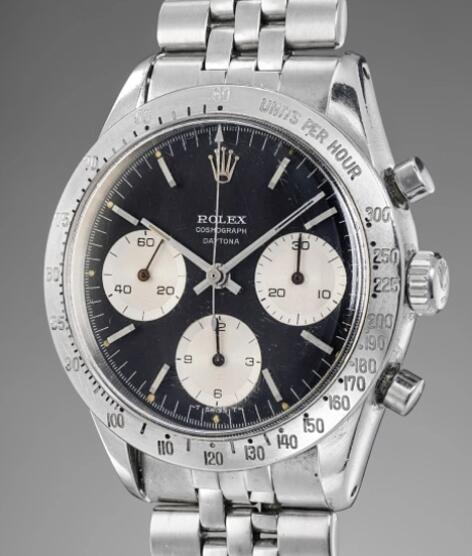
1964: Rolex Daytona Ref. 6239 Replica Watches
The “Daytona” signature was introduced to commemorate high quality Rolex super clone watches’ sponsorship of the motor race at Daytona Beach. Models produced over the next few years can be dated according to the placement of the logo: From 1964 to 1967, “Daytona” was placed at 12 o’clock under the word “Cosmograph.” From 1967 onwards, it was placed above the subdial at 6 o’clock.
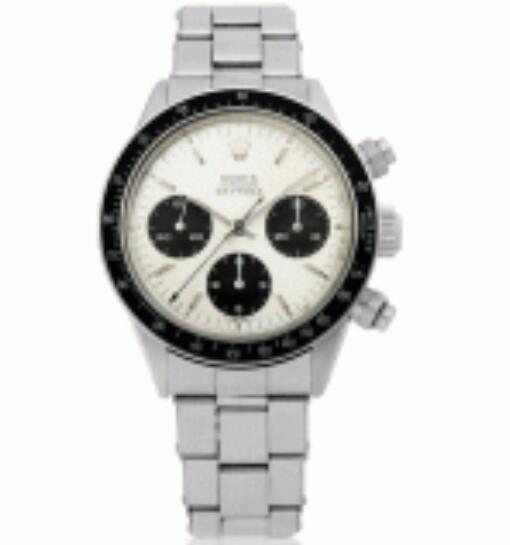
1965: Super Clone Rolex Daytona Ref. 6240 Watches
Screw-down chronograph pushers were added to the case of the Ref. 6240, making it waterproof.
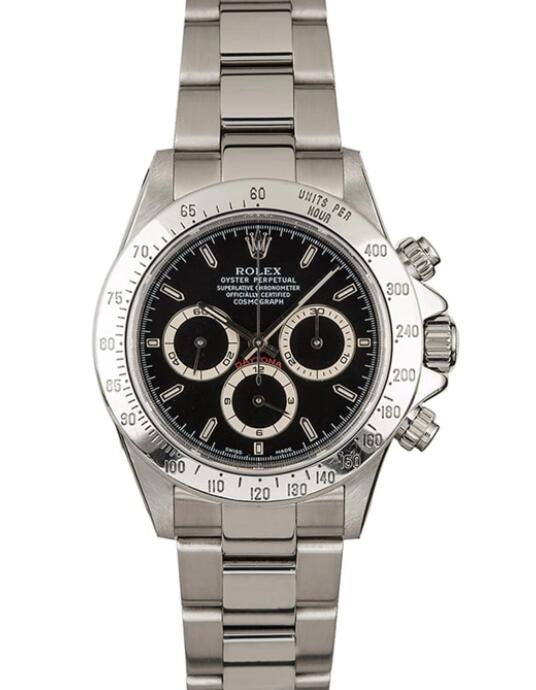
1988: Fake Rolex Daytona Ref. 16520 Watches
The Ref. 16520 was the first perfect Rolex Daytona replica watches fitted with an automatic movement, the Rolex caliber 4030, based on the Zenith Caliber 4030.
2000: Rolex Caliber 4130
An in-house movement, caliber 4130 was added to the model in 2000’s Ref. 116520. The 4130 is a high-performance chronograph movement with a vertical clutch and a Parachrom balance spring, resulting in better amplitude and greater accuracy.
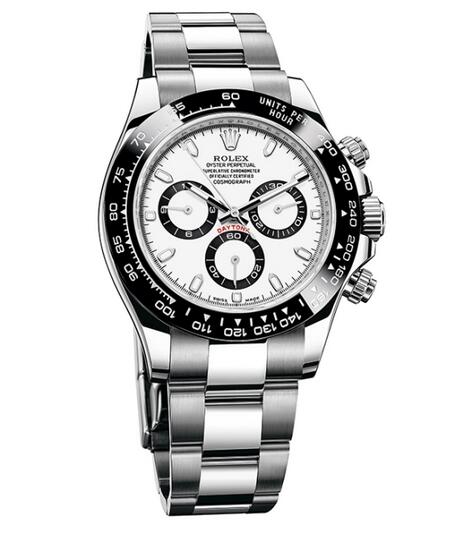
2016: Rolex Daytona Super Clone Watches With a Cerachrom Bezel
A milestone year for the top super clone Rolex Daytona watches, with the introduction of what is widely referred to as the perfect combination of elements: a steel case with a black Cerachrom bezel and the automatic caliber 4130.
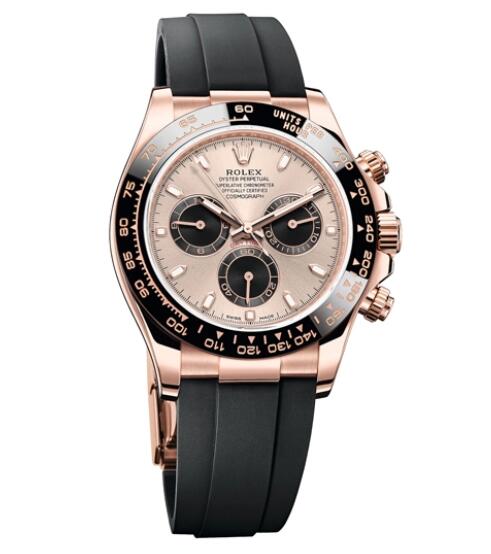
2017: Replica Rolex Daytona Watches With an Oysterflex Strap
Rolex introduced the gold China Rolex Daytona fake watches on an Oysterflex rubber strap in 2017. As the first in the series to be produced in precious metal with a rubber strap and Cerachrom bezel, this is also destined to become a collector’s favorite.